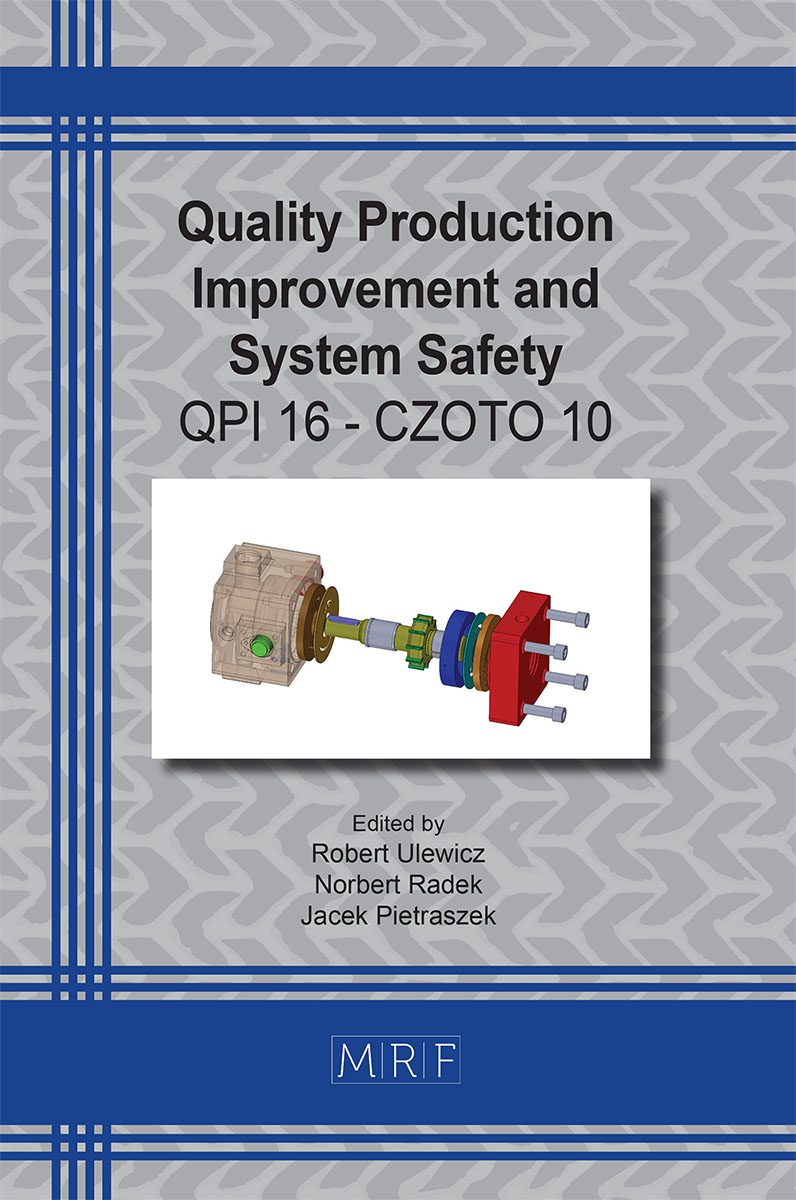Evaluation of Safe and Hygienic Work Conditions in the COVID-19 Era: A Case Study in a Production Company
KIELESIŃSKA Agata
download PDFAbstract. In recent times, the importance of occupational health and safety has escalated for modern enterprises. This shift can be attributed to the emergence of the COVID-19 virus, which compelled numerous businesses to adopt crisis management strategies and embrace remote work arrangements. It can be argued that the pandemic necessitated employers to implement suitable health and safety measures in order to sustain their operations in the labor market. The objective of this study is to evaluate occupational risks, considering the implications arising from the pandemic, and subsequently assess the provision of safe and hygienic conditions during this period. It is important to note that workplace hygiene requirements can vary based on the company, industry, and job role. Different work environments will entail distinct hygiene demands, and certain occupations or industries may even entail additional risks warranting extra protection. Hence, the assessment focused solely on production positions such as machine operators, fitters, quality inspectors, and warehouse workers.
Keywords
COVID 19, Occupational Risk
Published online 9/1/2023, 8 pages
Copyright © 2023 by the author(s)
Published under license by Materials Research Forum LLC., Millersville PA, USA
Citation: KIELESIŃSKA Agata, Evaluation of Safe and Hygienic Work Conditions in the COVID-19 Era: A Case Study in a Production Company, Materials Research Proceedings, Vol. 34, pp 414-421, 2023
DOI: https://doi.org/10.21741/9781644902691-48
The article was published as article 48 of the book Quality Production Improvement and System Safety
![]() Content from this work may be used under the terms of the Creative Commons Attribution 3.0 license. Any further distribution of this work must maintain attribution to the author(s) and the title of the work, journal citation and DOI.
Content from this work may be used under the terms of the Creative Commons Attribution 3.0 license. Any further distribution of this work must maintain attribution to the author(s) and the title of the work, journal citation and DOI.
References
[1] J. Bartnicka et al. Evaluation of the Effectiveness of Employers and H&S Services in Relation to the COVID-19 System in Polish Manufacturing Companies. Int. J. Environ. Res. Public Health 18 (2021) art.9302. https://doi.org/10.3390/ijerph18179302
[2] N. Baryshnikova et al. Enterprises’ strategies transformation in the real sector of the economy in the context of the COVID-19 pandemic, Prod. Eng. Arch. 27 (2021) 8-15. https://doi.org/10.30657/pea.2021.27.2
[3] V. Holubova. Integrated Safety Management Systems, Pol. J. Manag. Stud. 14 (2016) 106-118. https://doi.org/10.17512/pjms.2016.14.1.10.
[4] M.A. Taylor, A.M. Alvero. The Effects of Safety Discrimination Training and Frequent Safety Observations on Safety-Related Behavior, J. Org. Behav. Manag. 32 (2012) 169-193. https://doi.org/10.1080/01608061.2012.698115
[5] N.B. Kurland et al. Business and society in the age of COVID‐19: Introduction to the special issue, Bus. Soc. Rev. 127 (2022) 147-157. https://doi.org/10.1111/basr.12265
[6] A. Terje. Risk assessment and risk management: Review of recent advances on their foundation, Eur. J. Oper. Res. 253 (2016) 1-13. https://doi.org/10.1016/j.ejor.2015.12.023
[7] R. Ulewicz et al. Quality and work safety in metal foundry. In: METAL 2020 29th Int. Conf. Metall. Mater., Brno, Czech Republic. Ostrava, Tanger, 1287-1293.. https://doi.org/10.37904/metal.2020.3649
[8] M. Niciejewska, M. Obrecht. Impact of Behavioral Safety (Behavioural-Based Safety – BBS) on the Modification of Dangerous Behaviors in Enterprises, In: System Safety: Human-Technical Facility-Environment 2 (2020) 324-332. https://doi.org/10.2478/9788395720437-040
[9] J. Pietraszek et al. The parametric RSM model with higher order terms for the meat tumbler machine process, Solid State Phenom. 235 (2015) 37-44. https://doi.org/10.4028/www.scientific.net/SSP.235.37
[10] R. Dwornicka, J. Pietraszek. The outline of the expert system for the design of experiment, Prod. Eng. Arch. 20 (2018) 43-48. https://doi.org/10.30657/pea.2018.20.09
[11] J. Pietraszek et al. Challenges for the DOE methodology related to the introduction of Industry 4.0. Prod. Eng. Arch. 26 (2020) 190-194. https://doi.org/10.30657/pea.2020.26.33
[12] J. Pietraszek. The modified sequential-binary approach for fuzzy operations on correlated assessments, LNAI 7894 (2013) 353-364. https://doi.org/10.1007/978-3-642-38658-9_32
[13] J. Pietraszek et al. Factorial approach to assessment of GPU computational efficiency in surrogate models, Adv. Mater. Res. 874 (2014) 157-162. https://doi.org/10.4028/www.scientific.net/AMR.874.157
[14] J. Pietraszek et al. The fixed-effects analysis of the relation between SDAS and carbides for the airfoil blade traces. Arch. Metall. Mater. 62 (2017) 235-239. https://doi.org/10.1515/amm-2017-0035
[15] B. Jasiewicz et al. Inter-observer and intra-observer reliability in the radiographic measurements of paediatric forefoot alignment, Foot Ankle Surg. 27 (2021) 371-376. https://doi.org/10.1016/j.fas.2020.04.015
[16] J. Korzekwa et al. Tribological behaviour of Al2O3/inorganic fullerene-like WS2 composite layer sliding against plastic, Int. J. Surf. Sci. Eng. 10 (2016) 570-584. https://doi.org/10.1504/IJSURFSE.2016.081035
[17] N. Radek et al. Microstructure and tribological properties of DLC coatings, Mater. Res. Proc. 17 (2020) 171-176. https://doi.org/10.21741/9781644901038-26
[18] N. Radek et al. Influence of laser texturing on tribological properties of DLC coatings, Prod. Eng. Arch. 27 (2021) 119-123. https://doi.org/10.30657/pea.2021.27.15












